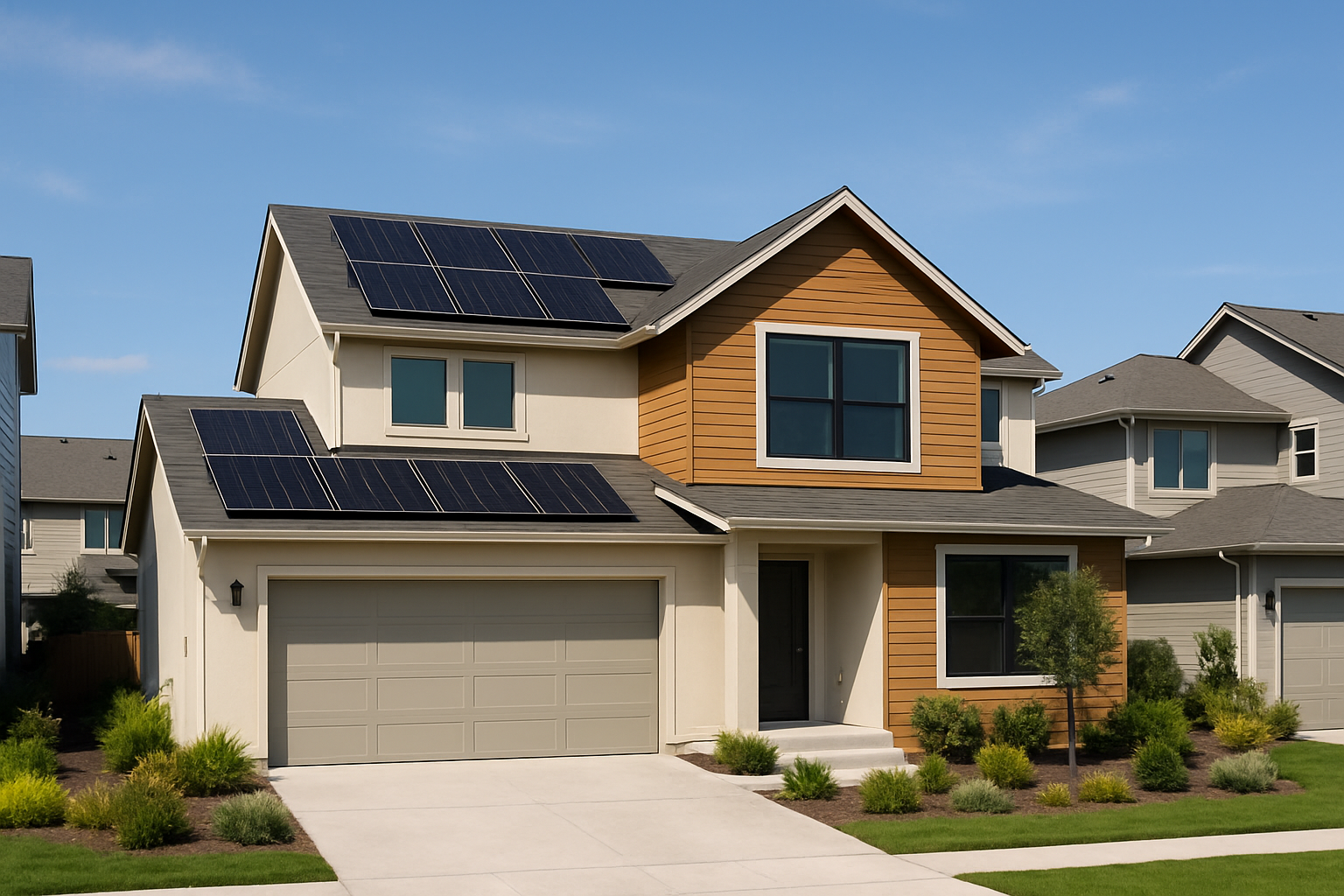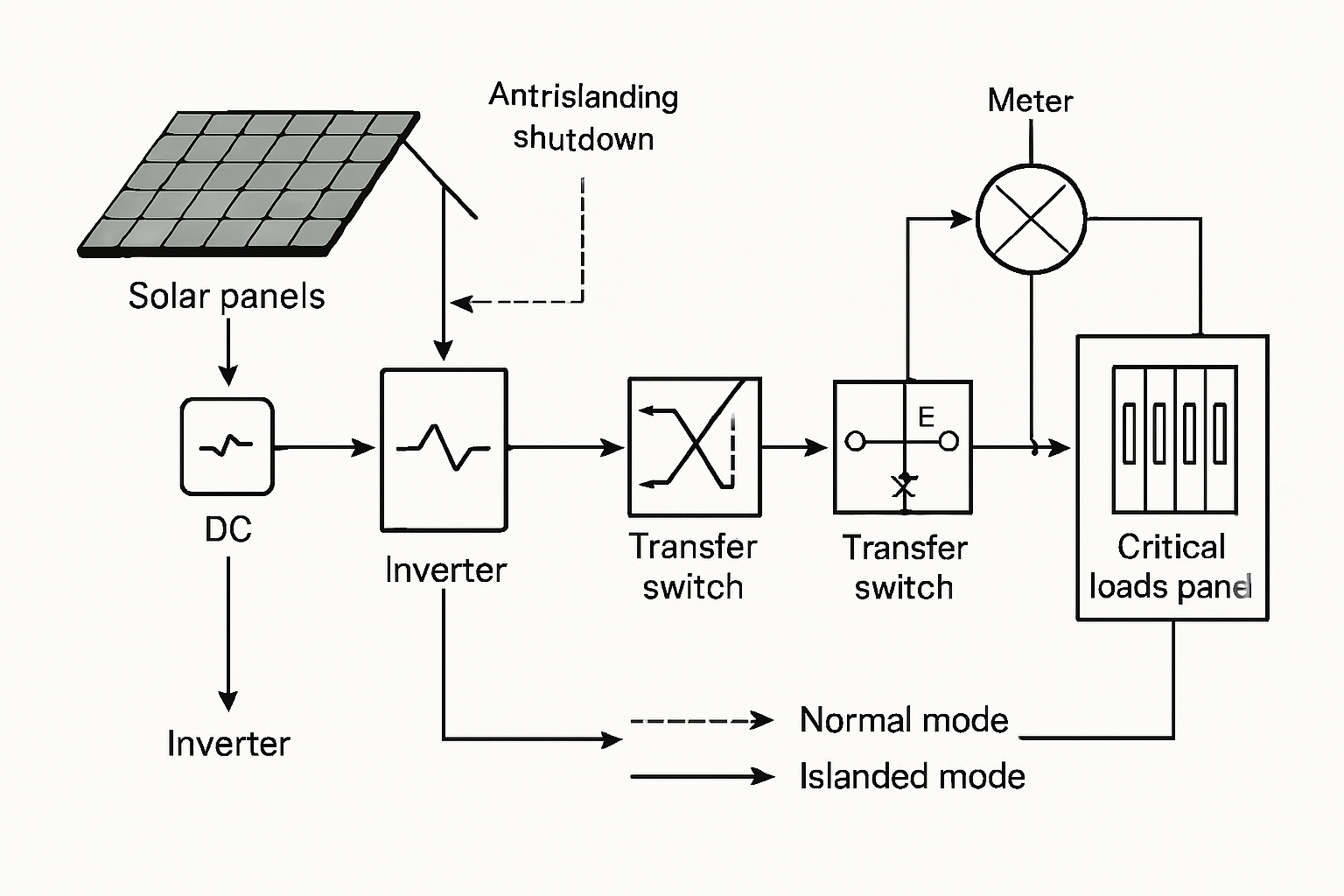Homeowner associations (HOAs) often present the most challenging hurdle for residential solar adoption. While solar technology costs continue declining and installations surge nationwide, many homeowners face restrictive covenants that limit or prohibit rooftop solar systems. This comprehensive case study examines successful strategies for obtaining HOA design variances, providing actionable insights for homeowners navigating these complex approval processes.

Understanding HOA Solar Restrictions and Legal Framework
Most HOAs implement architectural guidelines to maintain neighborhood aesthetics and property values. These restrictions typically address panel placement, color requirements, visibility from streets, and overall system design. However, many states have enacted solar access laws that limit HOAs' ability to completely prohibit solar installations.
The legal landscape varies significantly by state. Some jurisdictions provide strong protections for solar rights, while others grant HOAs broader discretionary power. Understanding your local regulations forms the foundation of any successful variance application.
Common HOA Solar Restrictions
- Panel visibility limitations from public streets
- Specific color and mounting requirements
- Roof placement restrictions (rear-facing only)
- System size limitations
- Conduit and equipment screening mandates
The Successful Variance Case: Strategic Preparation
Our featured case involves a homeowner in a restrictive HOA community who successfully obtained approval for a front-facing solar array. The key to success lay in meticulous preparation and strategic presentation.
Initial Assessment and Documentation
The homeowner began by thoroughly reviewing HOA covenants, conditions, and restrictions (CC&Rs). They documented existing solar installations within the community and researched comparable systems in similar neighborhoods. This groundwork revealed inconsistent enforcement and precedent-setting approvals.
Professional energy audits demonstrated that rear-facing installation would reduce system efficiency by 35%, significantly impacting the economic viability. This technical documentation proved crucial in justifying the variance request.
Building Community Support
Before submitting the formal application, the homeowner engaged neighbors through informal discussions and educational materials. They addressed common concerns about property values and aesthetics while highlighting environmental benefits. This grassroots approach generated several letters of support from adjacent property owners.
Crafting the Winning Variance Application
The variance application combined technical expertise with compelling visual presentations. Key components included detailed architectural renderings, energy production analyses, and comprehensive cost-benefit calculations.
Technical Documentation Requirements
| Document Type | Purpose | Key Elements |
|---|---|---|
| Site Analysis | Demonstrate optimal placement | Shading studies, roof orientation, structural capacity |
| Visual Impact Assessment | Address aesthetic concerns | 3D renderings, sight line analysis, landscaping plans |
| Economic Analysis | Justify financial necessity | Production comparisons, payback periods, property value impact |
| Environmental Benefits | Highlight community value | Carbon reduction, renewable energy goals, sustainability metrics |
Addressing Aesthetic Concerns
The application included specific design modifications to minimize visual impact. These included low-profile mounting systems, color-matched components, and strategic landscaping to screen ground-mounted equipment. The homeowner also proposed using premium panels with sleeker profiles and uniform appearance.
According to research from the International Energy Agency, proper system design and community engagement significantly improve acceptance rates for distributed solar installations. The visibility and controllability of distributed assets must evolve in line with community needs and aesthetic standards.
Navigating the Approval Process
The formal review process involved multiple stages, each requiring careful navigation and strategic communication. Understanding HOA decision-making structures proved essential for success.
Architectural Review Committee Presentation
The initial presentation to the Architectural Review Committee focused on technical compliance and design integration. The homeowner demonstrated how the proposed system met existing guidelines while requesting specific variances for optimal performance.
Key presentation elements included:
- Detailed compliance matrix showing adherence to existing standards
- Professional installation timeline and contractor credentials
- Maintenance and warranty commitments
- Reversibility assurances for future property transfers
Board of Directors Final Review
The final board presentation emphasized community benefits and precedent-setting potential. The homeowner presented data showing that well-designed solar installations typically increase property values by 3-4%, benefiting the entire neighborhood.
Board members expressed initial concerns about setting precedent for future applications. The homeowner addressed this by proposing specific design standards that could guide future solar installations while maintaining community aesthetics.
Implementation and Lessons Learned
Following unanimous board approval, the installation proceeded smoothly with regular progress updates to the HOA. The completed system exceeded performance projections while maintaining the promised aesthetic integration.
Post-Installation Community Impact
The successful installation generated significant interest from other homeowners. Within six months, three additional variance applications were submitted using similar documentation and design approaches. The HOA subsequently developed formal solar installation guidelines based on this precedent-setting case.
The system's performance data validated the variance justification. Front-facing panels produced 28% more energy than theoretical rear-facing alternatives, demonstrating the economic necessity of the approved design.
Key Success Factors
Several critical factors contributed to this successful outcome:
- Comprehensive preparation and professional documentation
- Proactive community engagement and neighbor support
- Technical justification for variance necessity
- Aesthetic compromise and design flexibility
- Clear communication of community benefits
Strategic Recommendations for Future Applications
Based on this case study and industry best practices, homeowners can significantly improve their chances of HOA approval through strategic preparation and presentation.
Pre-Application Strategies
Begin the process with thorough research and community engagement. Review all governing documents, identify existing solar installations, and understand local solar rights laws. Engage professional solar consultants early to develop optimal system designs that balance performance with aesthetic considerations.
Building relationships with HOA board members and neighbors creates a supportive environment for your application. Address concerns proactively and demonstrate commitment to community standards.
Application Best Practices
Professional documentation significantly impacts approval likelihood. Invest in high-quality renderings, detailed technical analyses, and comprehensive cost-benefit studies. Present information clearly and address potential objections before they arise.
Consider offering design compromises that maintain system effectiveness while addressing aesthetic concerns. Premium components, strategic landscaping, and careful placement can satisfy both performance and visual requirements.
The rooftop solar sector continues expanding rapidly, with significant potential for job creation and economic development. As noted in IEA research, rooftop solar has the greatest potential for job creation among all clean energy technologies, making community support increasingly important for widespread adoption.
Future Outlook and Community Benefits
Successful HOA variance cases like this example create positive precedents that benefit entire communities. As solar technology continues advancing and costs decline, HOAs increasingly recognize the value of accommodating renewable energy installations.
Modern energy storage systems complement rooftop solar installations, providing additional benefits like backup power and grid stability. Integrated solutions combining solar panels with lithium battery storage offer homeowners greater energy independence while supporting community resilience.
The growing emphasis on sustainability and climate action creates favorable conditions for solar adoption. HOAs that embrace renewable energy installations position their communities as forward-thinking and environmentally responsible, potentially attracting environmentally conscious buyers and maintaining competitive property values.
This case study demonstrates that with proper preparation, professional presentation, and community engagement, homeowners can successfully navigate HOA restrictions to achieve their solar energy goals. The key lies in balancing technical requirements with aesthetic considerations while clearly communicating the benefits to the broader community.





Leave a comment
All comments are moderated before being published.
This site is protected by hCaptcha and the hCaptcha Privacy Policy and Terms of Service apply.